Dahshur, the location of the Bent Pyramid and Red Pyramid amongst other much older pyramids is about 40km South of Cairo. It’s less visited by tourists, their loss! It does feel like you are in the middle of nowhere but coupled with almost no tourists compared to Giza (when I went there were only 3 tourists including me!) and what is on display it is amazing! Doing Dahshur and Saqqara (more visited than Dahshur) you can see and have access to much more than Giza with less intrusive locals wishing to give you a “special” tour for a little something – this happens everywhere in the tourists; simply tell them you have no money and be persistently firm.
Back to the journey, they drive experiences become more interesting every time and driving in Cairo is ill advised if you have high blood pressure?! Heading South from Cairo following the Nile you go through the city and then Giza neither of which is ecstatically pleasing, dilapidated commercial and residential high riser buildings fill every void possible and dusted in desert sand. The ride leaves the city and into the countryside with river side villas punctuated between the very poor separated by high walls but the scenery becoming more what I imagine this part of the country used to look like thousands of years ago with forests of palm trees filled with plump rich yellow dates hanging under the shade of the palm leaves. Leaving perpendicular to the road heading West I thought we could be heading to nowhere, surely there can’t be anything here but then I got a glimpse of the Bent Pyramid. Through another security checkpoint (every major tourist attraction has tourist police) and the landscape is as barren as can be as you verge on the edge of the desert, from palm trees everywhere to no green as far as the eye can see, just rock and sand, then just sand. In the middle of what you could describe as wasteland are two huge pyramids, the Red Pyramid and the Bent Pyramid…WOW!
NB. Some people may not realise that Egypt has at least 118 pyramids. Saqqara has the oldest that are known of and Dahshur likely the second oldest.
The Dahshur pyramids were built by Pharaoh Sneferu (2613-2589 BC) – the father of Khufu, the builder of the Great Pyramid of Giza) and are the first examples of the transition to achieve a smooth/flat pyramid without any steps. The bent pyramid was Sneferu’s first attempt and not successful in his eyes, the Red Pyramid is the first true pyramid.

Bent Pyramid / The Southern Shining Pyramid of Dahshur
Made of limestone, 104 meters high, base is 189 meters, 1 426 767 cubic meters in volume, the bottom slopes at 54 degrees till 47 meters up, then 43 degrees till the top. Most common thought as to why it has two different angels is because of instability as they went higher, coincidentally the Red Pyramid is built at 43 degrees also by Sneferu
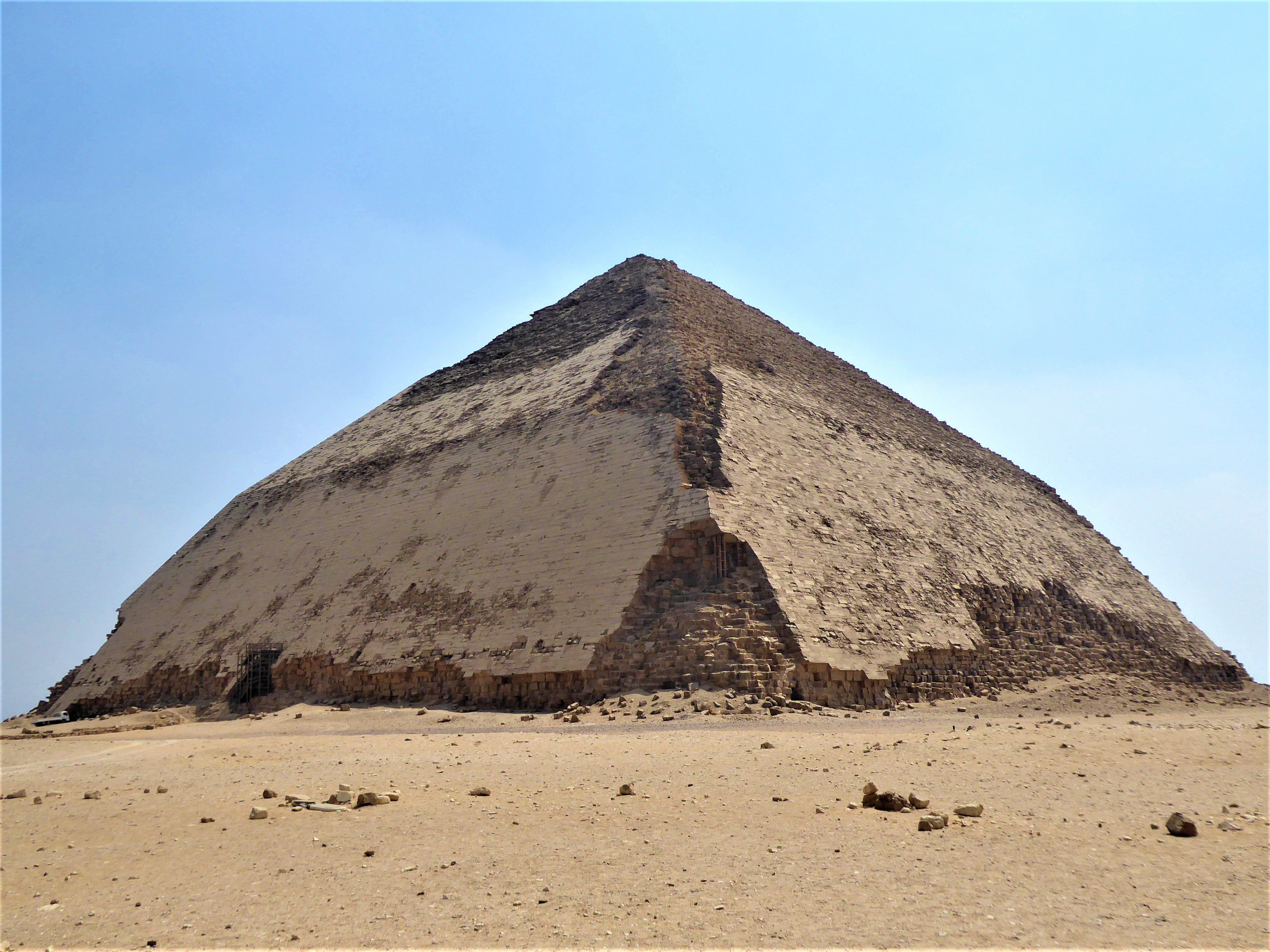
The Bent Pyramid is an amazing structure and the only pyramid with large parts of its smooth rendering still intact causing the sun to reflect off these masses of limestone render even today. With the desert sun glaring down you cannot stare at the surface for long even with sunglasses on, it must have been an astonishing sight upon completion no wonder it was called The Southern Shining Pyramid. After around 4500 years sure it has dilapidated and parts have fallen away, especially at the corners and base but, for a limestone structure, actually any structure for that matter left to the elements of the desert for thousands of years to be in the condition it is (and the Red Pyramid) is nothing short of a miracle, no, a testament to amazing builders and civilisation.
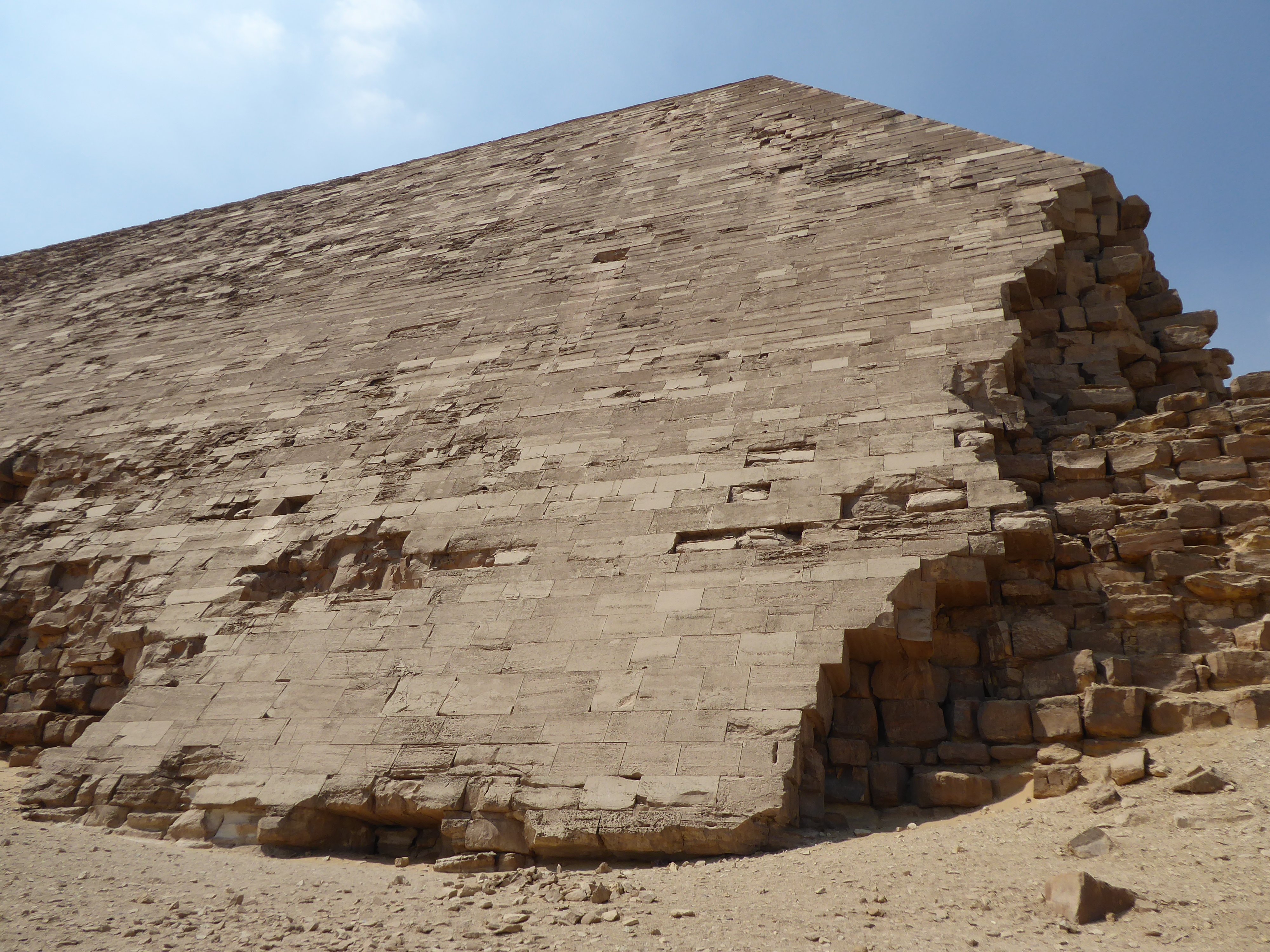
Strolling around the Pyramid you can’t help but be amazed by the size of the stones, cut with fire, water, wood and copper tools and that’s not even to mention getting them to the location and raising them – later pyramids using much bigger and heavier stones! Around the back of the pyramid is another smaller satellite pyramid, this was to hold the Pharaohs ka. In considerably worst state than the main pyramid it’s still in good condition for its age; with a base of near 53 meters it would have stood 26 meters high at an angle of 44 degrees. The chambers are closed to the public so I couldn’t go inside, I haven’t mentioned that the whole area is only guarded by 3 police officers (Bent and Red Pyramid). There used to be a temple on the East site but only a small fraction of the floor remains and scattered stone blocks.
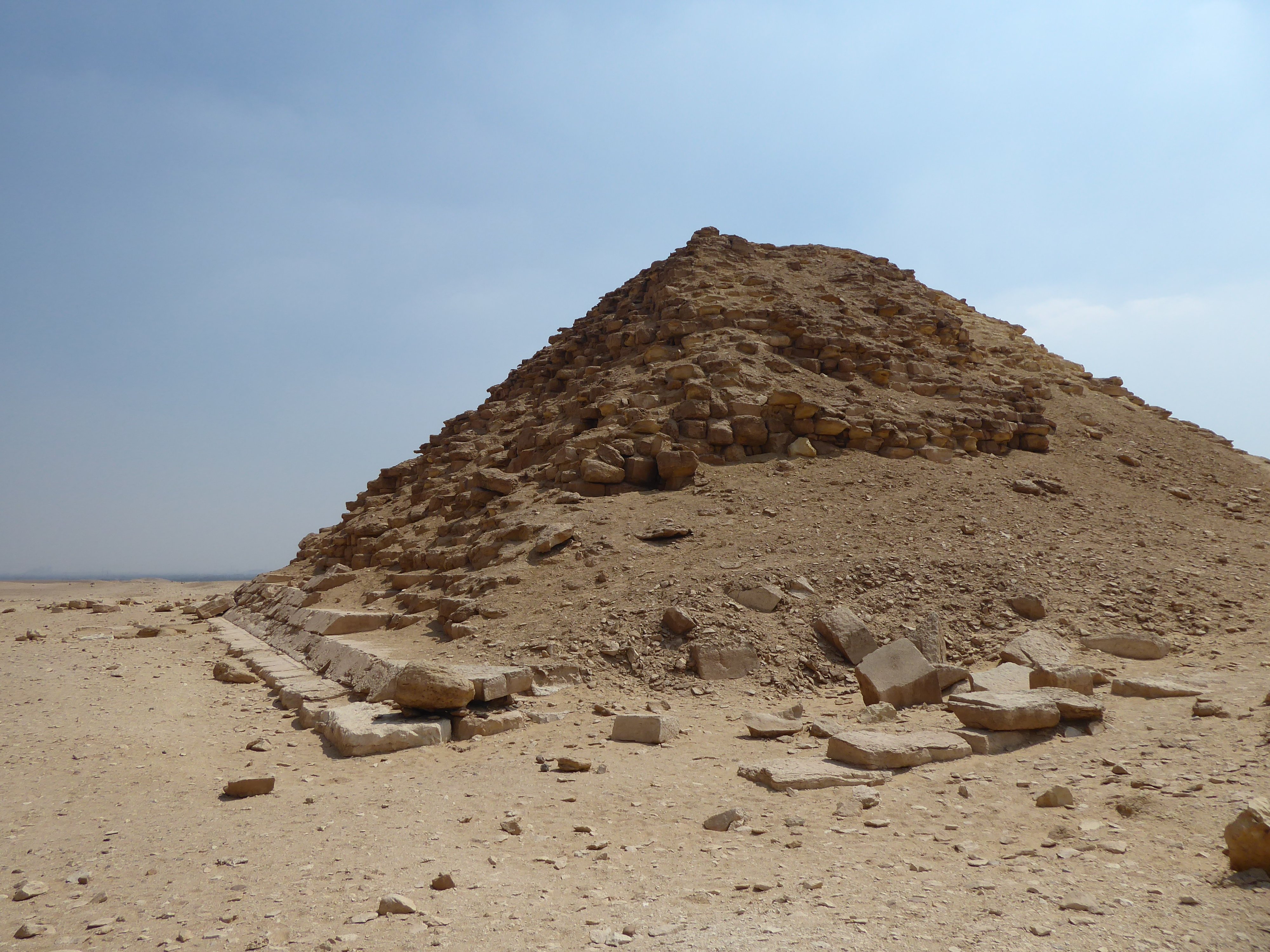
They were also working on the Bent Pyramid, one of the corners proper up with wooden scaffolding and although in the past you could go inside it was closed when I got there, a really pity but it was more pleasing to see they were working to conserve it…a reason to visit again.
Black Pyramid
To the East of the Bent Pyramid you can see the Black Pyramid, these days it doesn’t resemble a pyramid and hasn’t for thousands of years. Sadly, I couldn’t go there because the area is closed and even more sadly is it and the area around it was badly looted during the 2011 Egyptian Revolution. Built by King Amenemhat III (2055-1650 BC) and although still a wealthy and strong kingdom the hey days had long passed and so was the grandiose structures by comparison. It was 75 meters high, although cased in limestone it was build with mud brick and clay and didn’t last and not long after started to collapse. Black Pyramid got its name from what it looked like, a mass of dark rubble – the blackness I assuming coming from the colour of the mud and clay, even today it looks very dark. It was the first pyramid purposefully build to house the burial of the King and his Queens and has many elaborate tunnels and chambers.
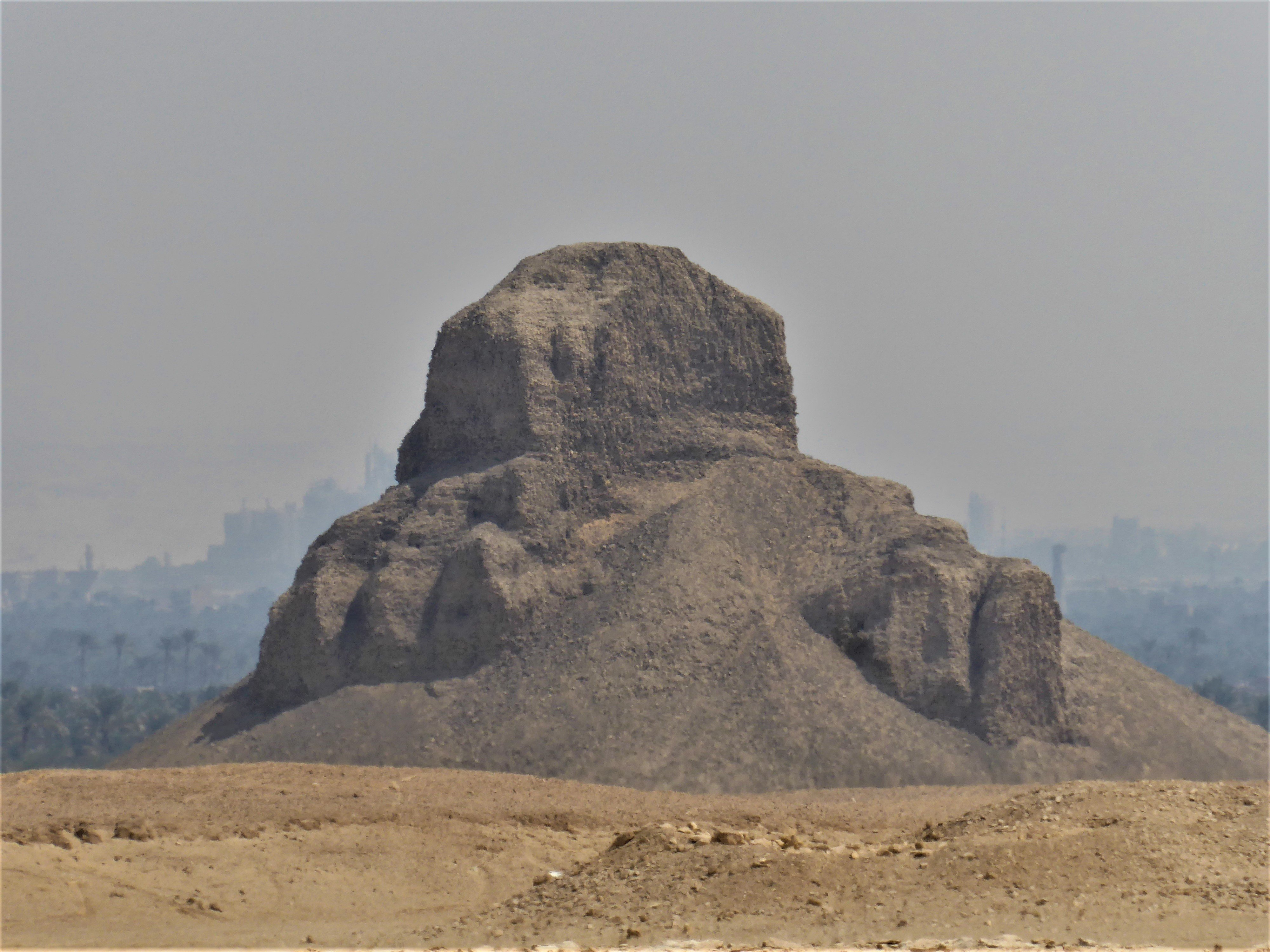
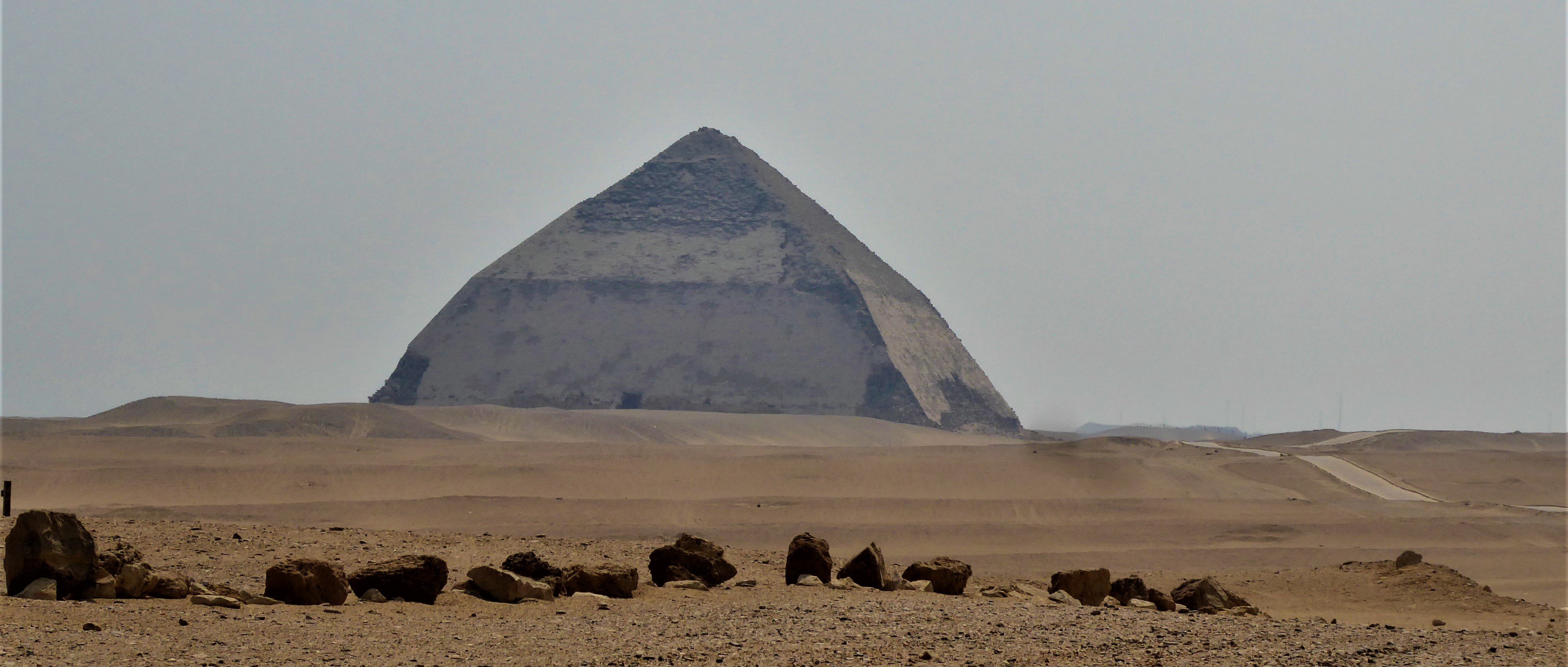
The Red Pyramid / North Pyramid of Dahshur
The first true pyramid and build by Sneferu it is the third largest Pyramid in Egypt (1st. Khufu, 2nd. Khafra both part of the Giza Pyramid complex). Called the Red Pyramid because of the red hue of the limestone and I’m told when it rains it goes a deep red. Sneferu built three pyramids the Bent, Red and Meidum (even further South but collapsed).
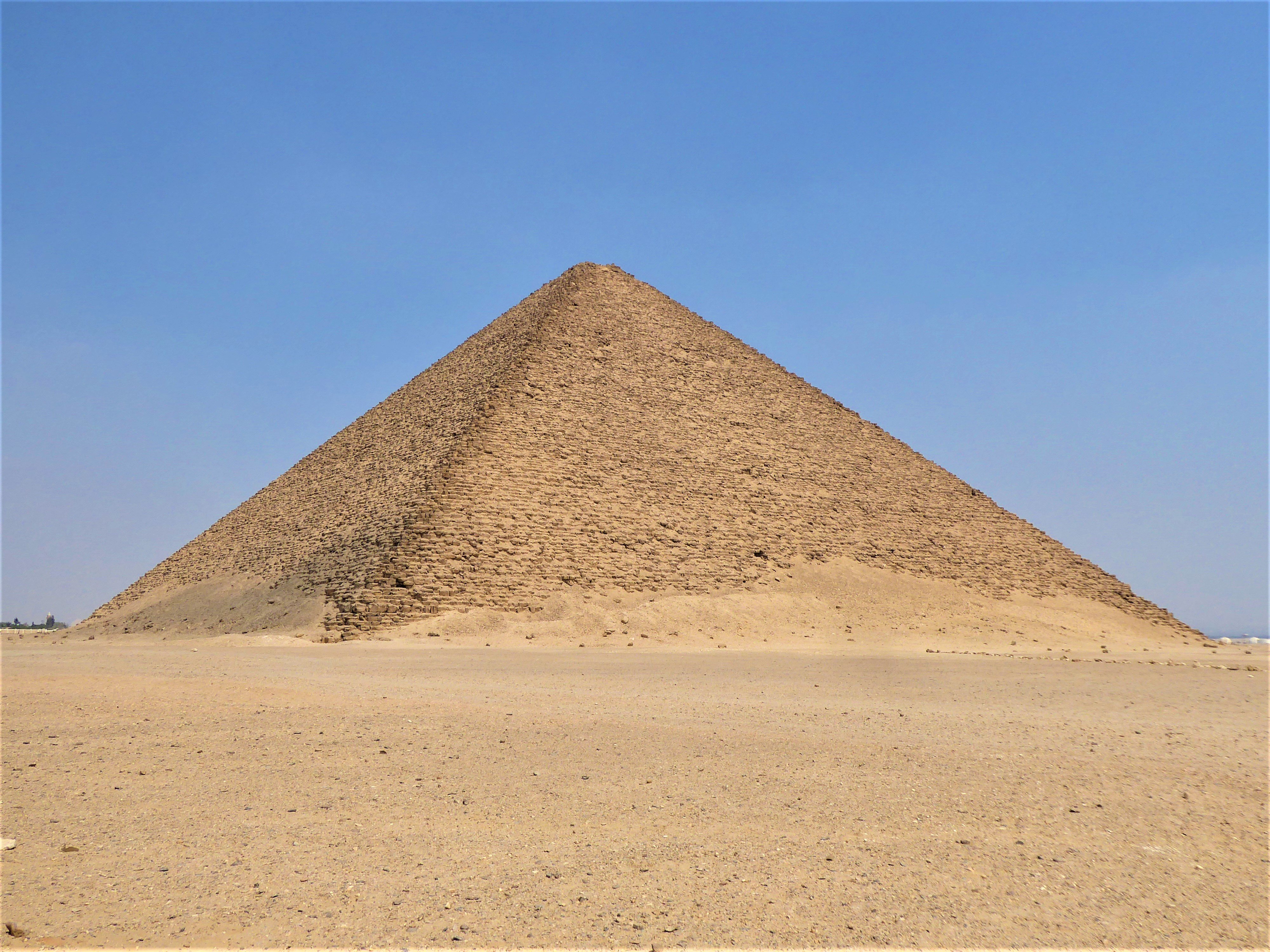
Some facts; 105 meters high, a base of 220 meters, volume of 1 694 000 cubic meters, slope of 43 degrees – It wasn’t always red as it used to be cased in white limestone. Over the years this was looted for buildings in Cairo
The Red Pyramid is in remarkable condition considering, you can’t see the base as it’s covered with sand around the whole circumference in some places I would guess 10 meters high. This makes it impossible to see if anything is/was around or near it, nonetheless what can be see is fantastic! I think what adds to the majestic nature of the Bent and Red Pyramid is the remote location, there are no distractions, no people, nothing. You look to the left and the Nile valley is in the distance, look to the right and nothing but sand, the only things here are the sun, sand, wind and these two super structures of a time in our history almost forgotten and what we know can only be a small fraction. This isolation made me feel uneasy at first but I closed my eyes and took a deep breath then opened them again, I was in the land of the Pharaohs, all those books I had read were now in front of me and I was finally where I wanted to be for as long as I can remember.
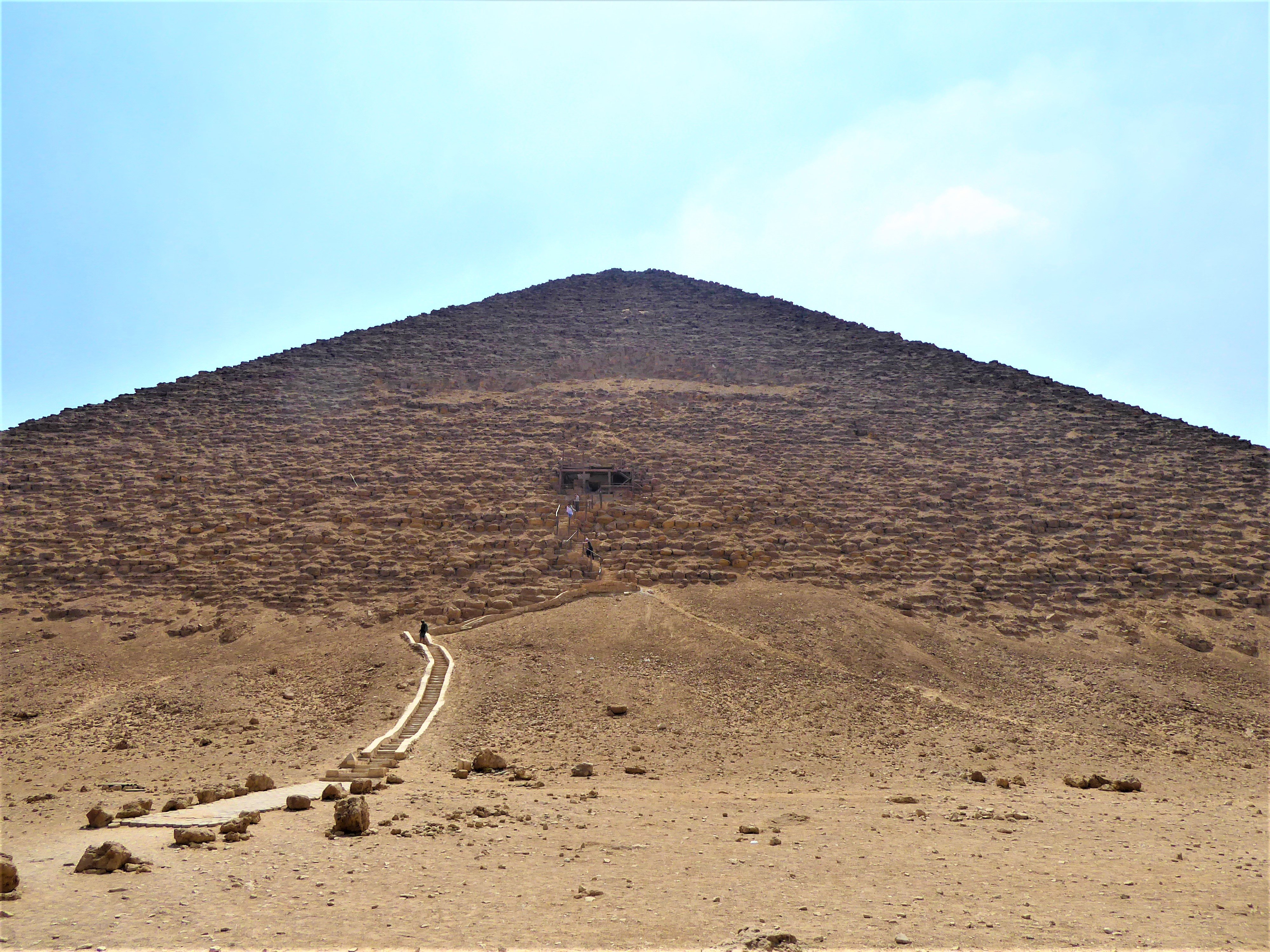
The stairs added for tourist ease to the door is a little climb to a very inconspicuous opening, as “custom” dictates the gentleman asked for “something” LE20 (Egyptian Pounds). The passageway down into the heart of the pyramid is not that big 0.91m high by 1.2m wide at 27 degrees in angle….and 61m long! What looks to be cut from pink granite the easiest way down is going backwards especially if you are tall and even then you bent over quite a bit for the whole way down but trust me it is well worth it! As you do down you cannot help but notice how hot it gets even though there is a crude ventilation system put in recently, I would hate to worked inside when it was constructed.
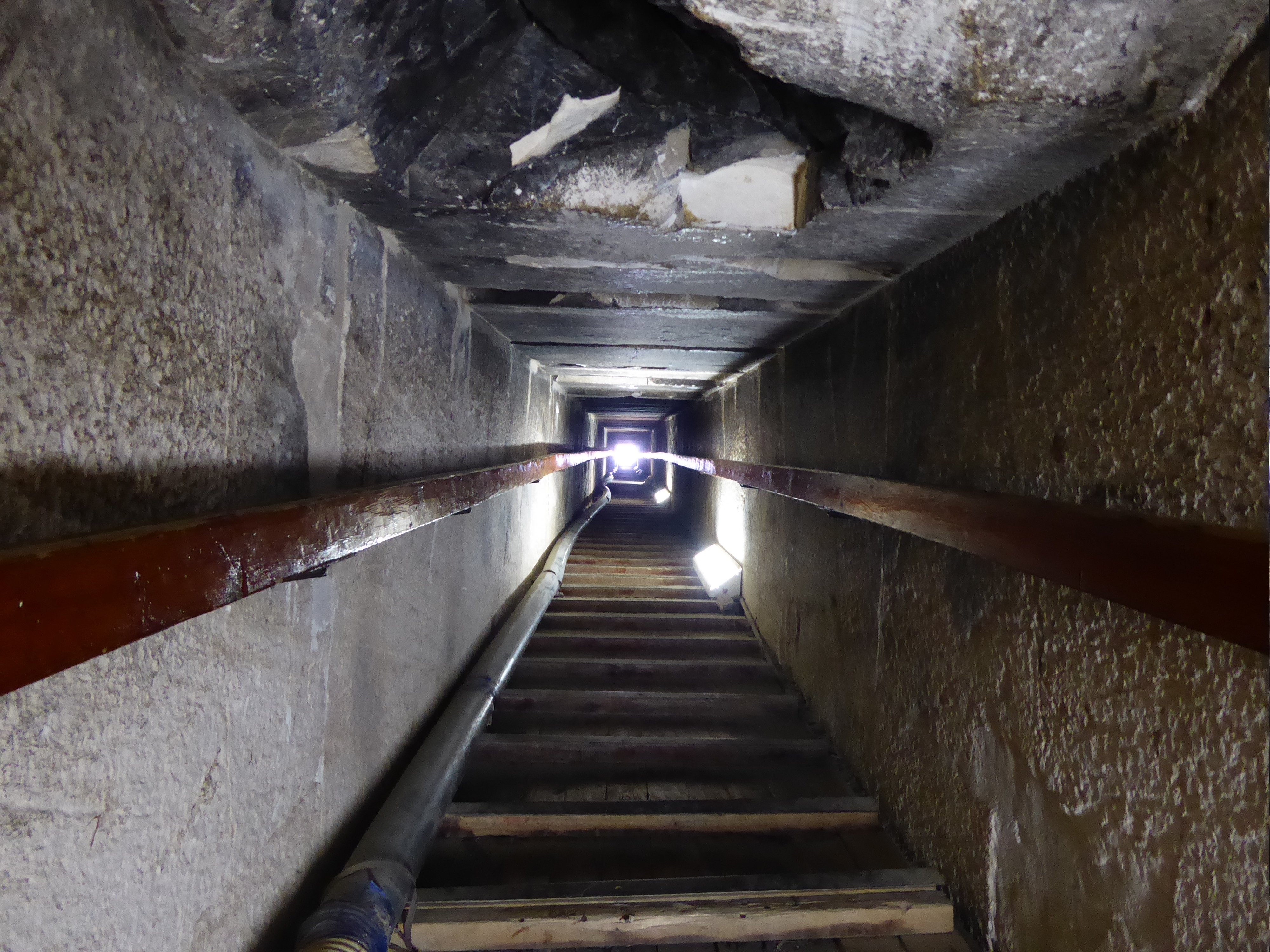
At the bottom of the shaft there another short horizontal shaft roughly the same dimensions maybe a little narrower, this leads into the first chamber/gallery with a 12m high corbelled roof of eleven steps. At the end of the chamber lies anther horizontal passage similar to the first, this leads to the second chamber of like proportions, the walls of massive red granite blocks with no gaps between them whatsoever, not even space for the edge of a piece of paper.
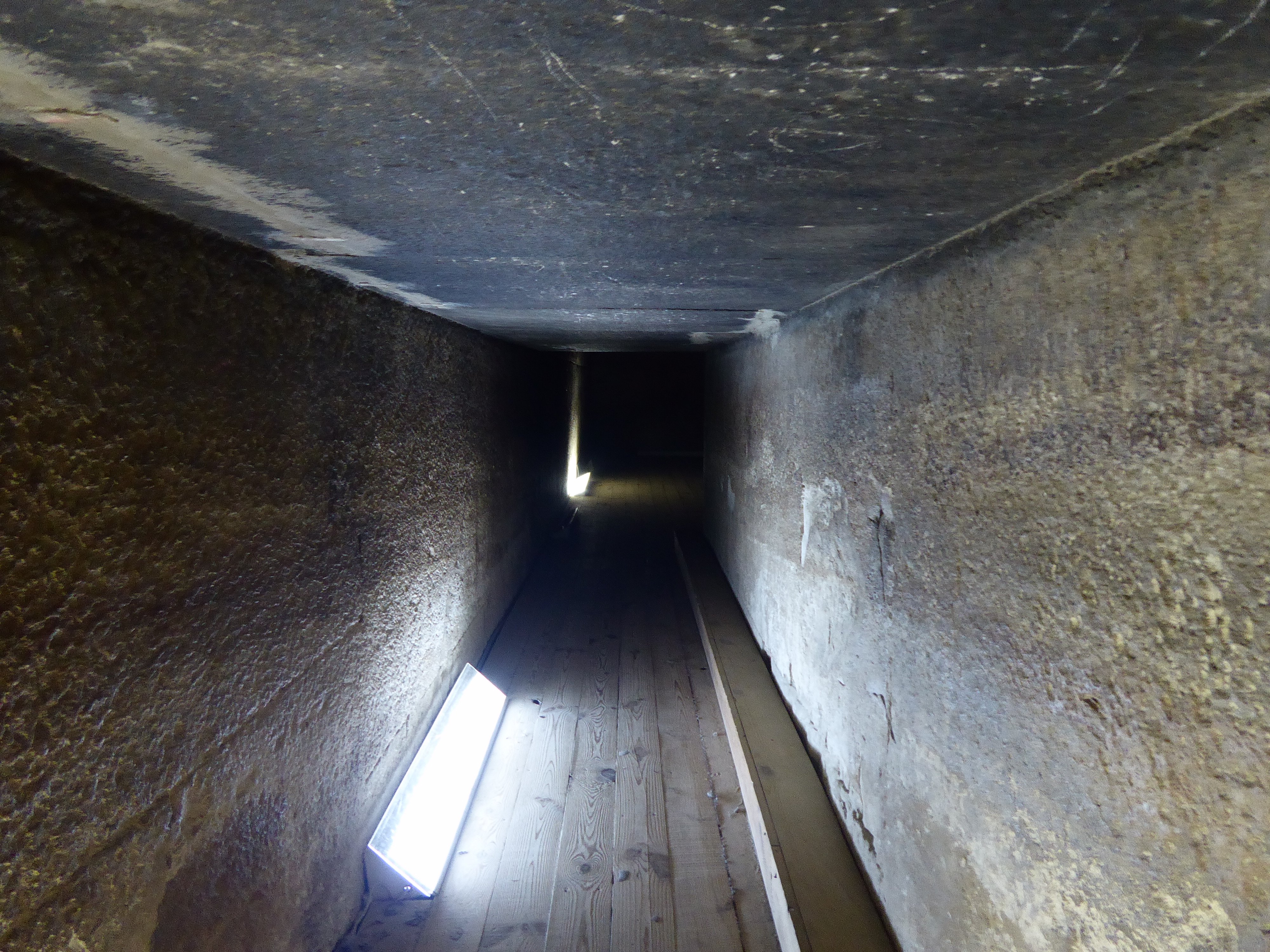
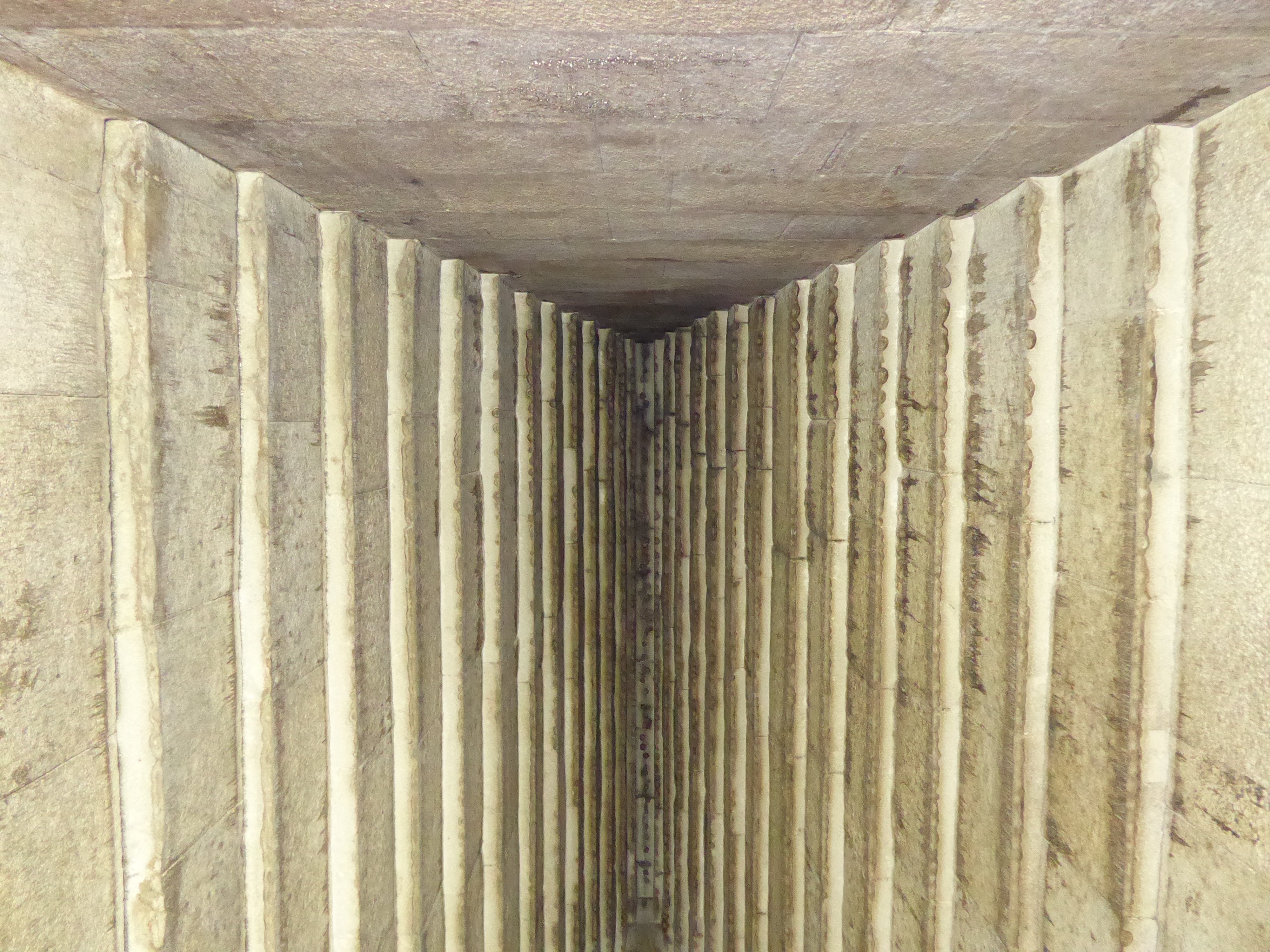
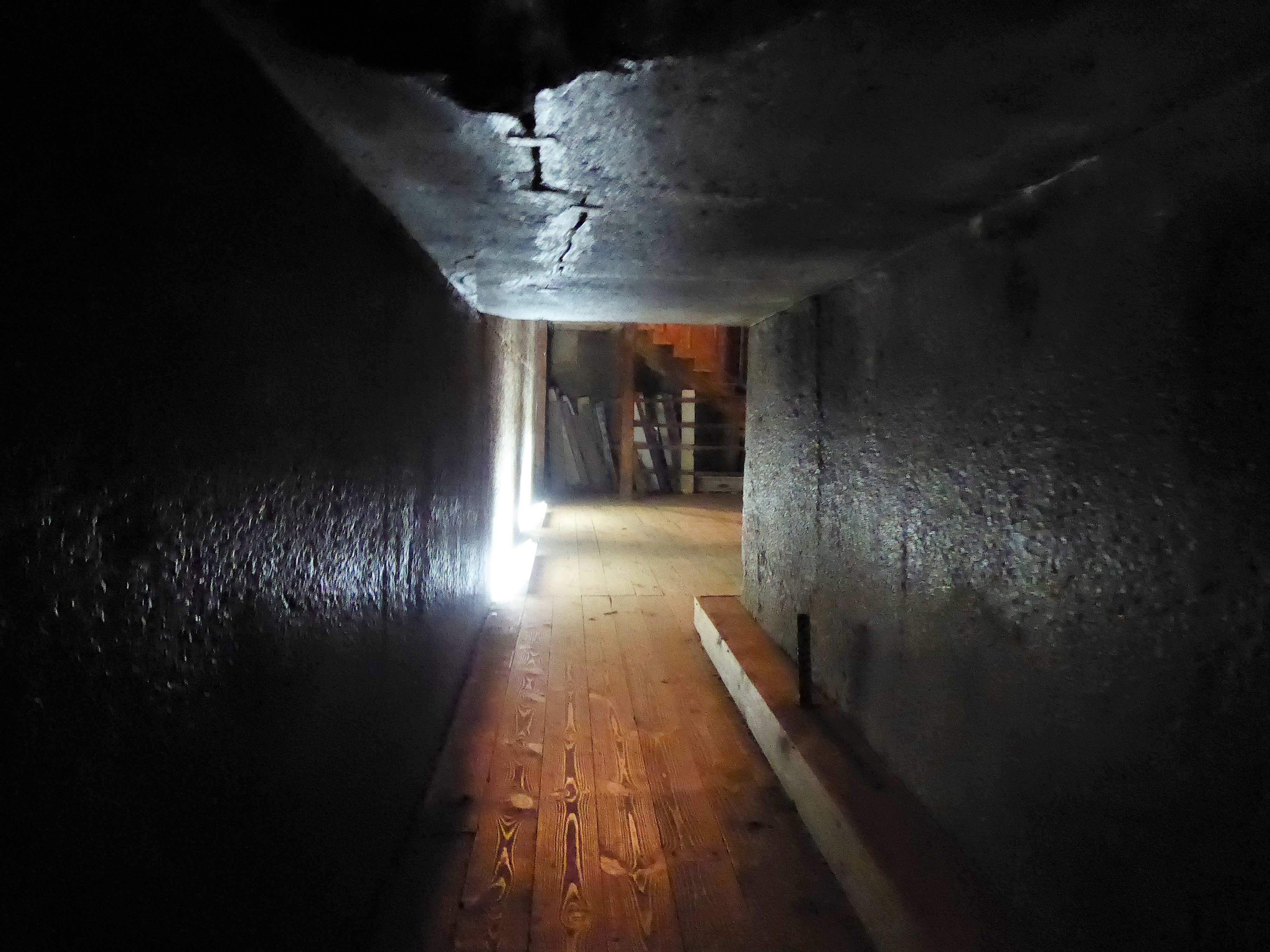
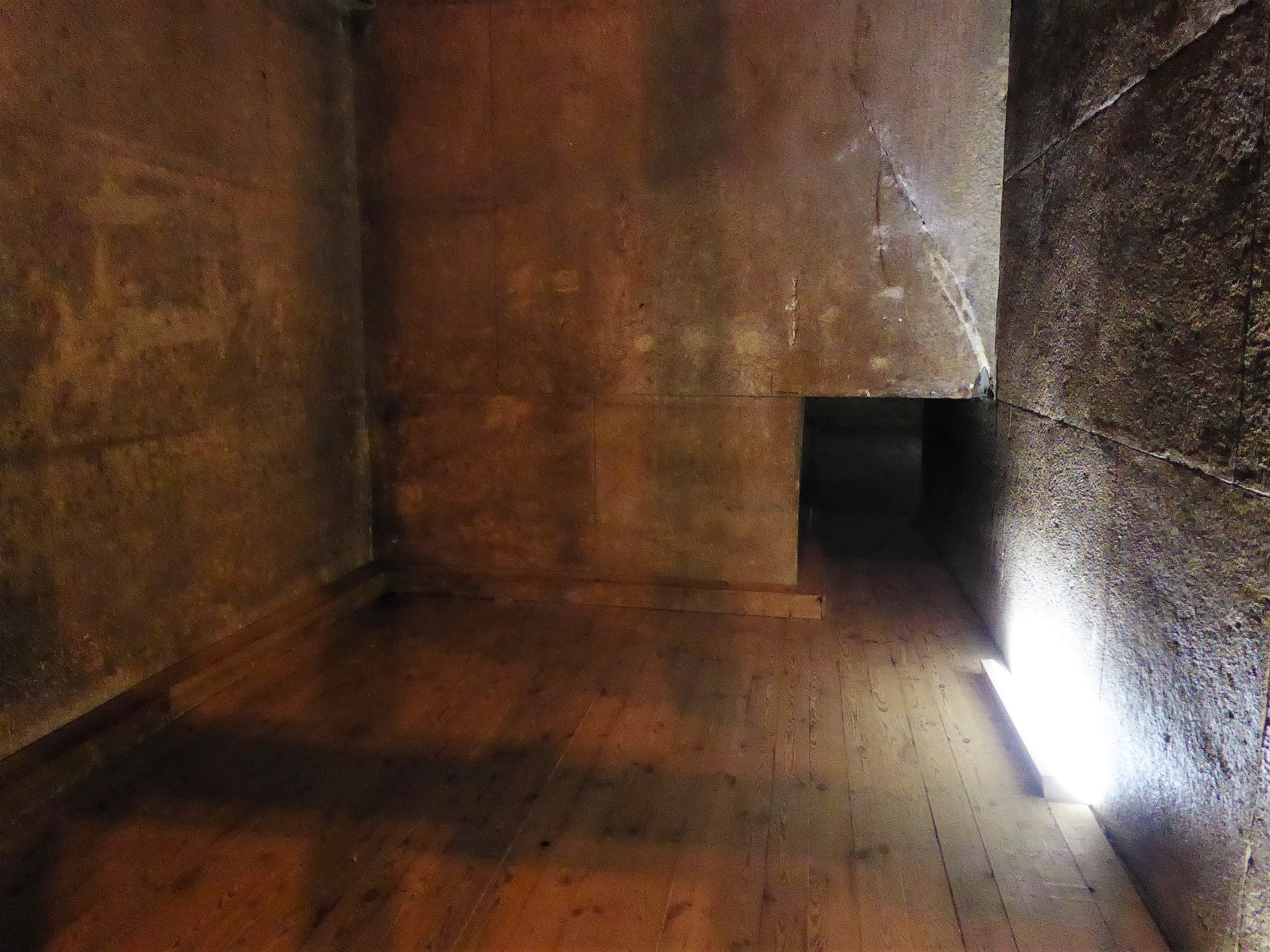
The next passageway is at the opposite end of the chamber like the others but at the top where the walls meet the ceiling. Now with purpose-built stairs to access the passageway it leads into the final chamber; it is unfinished as the walls and floor are rough, and the floor of the chamber is below the access passage – apparently this may be the work of robbers, even so it is not as neat as the others considering this is thought to be the burial chamber. The ceiling is also corbelled and 15m high on an East-West axis whereas the other two are on a North-South axis. With all that effort to build such a magnificent structure and the beautifully cut stone chambers it is very odd to have the main room in the state it is. If the construction of this pyramid is anything to go by and if indeed it was used as a burial of Sneferu then these chambers must have been filled to the brim with treasure that surpasses the imagination.
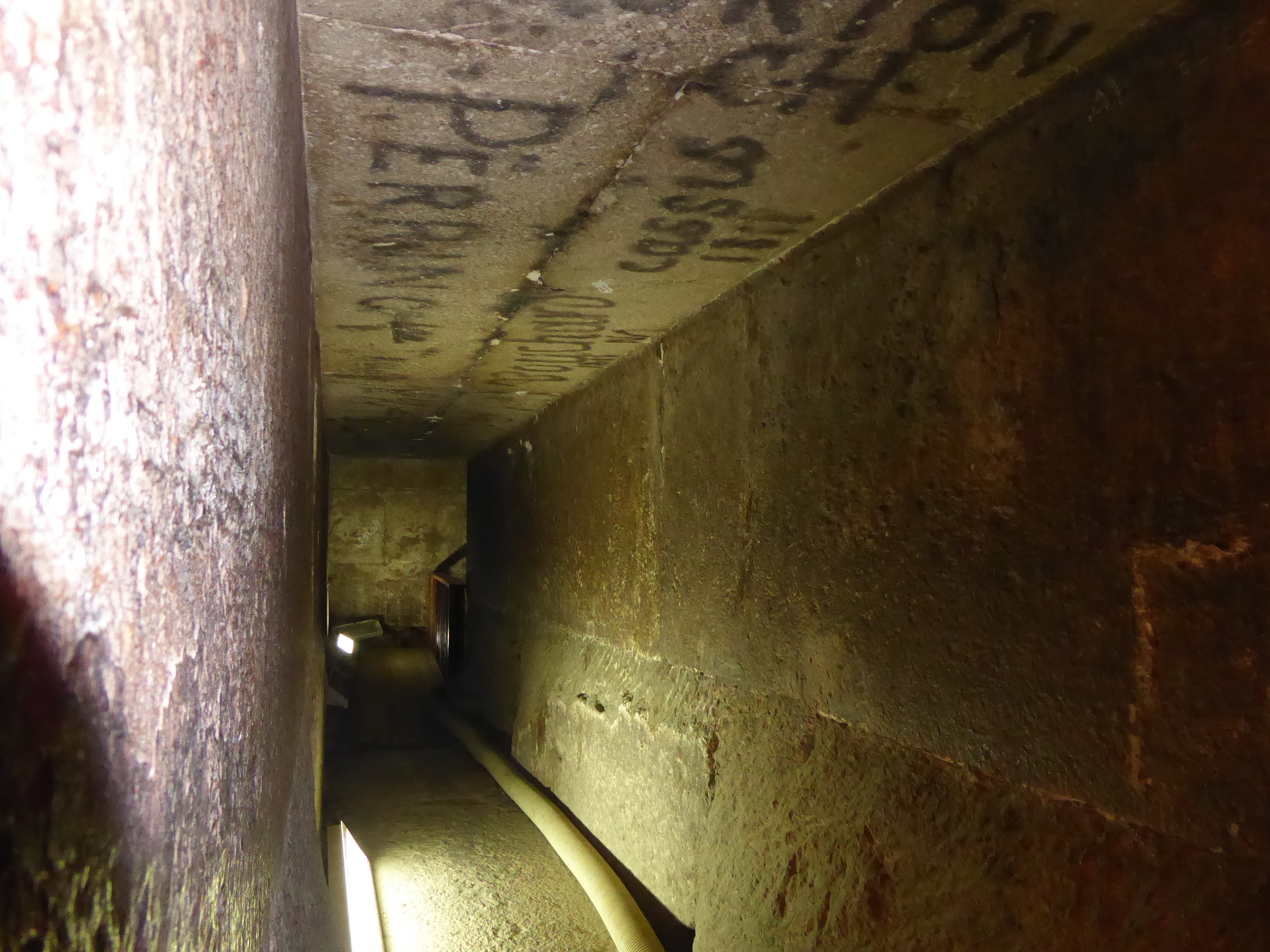

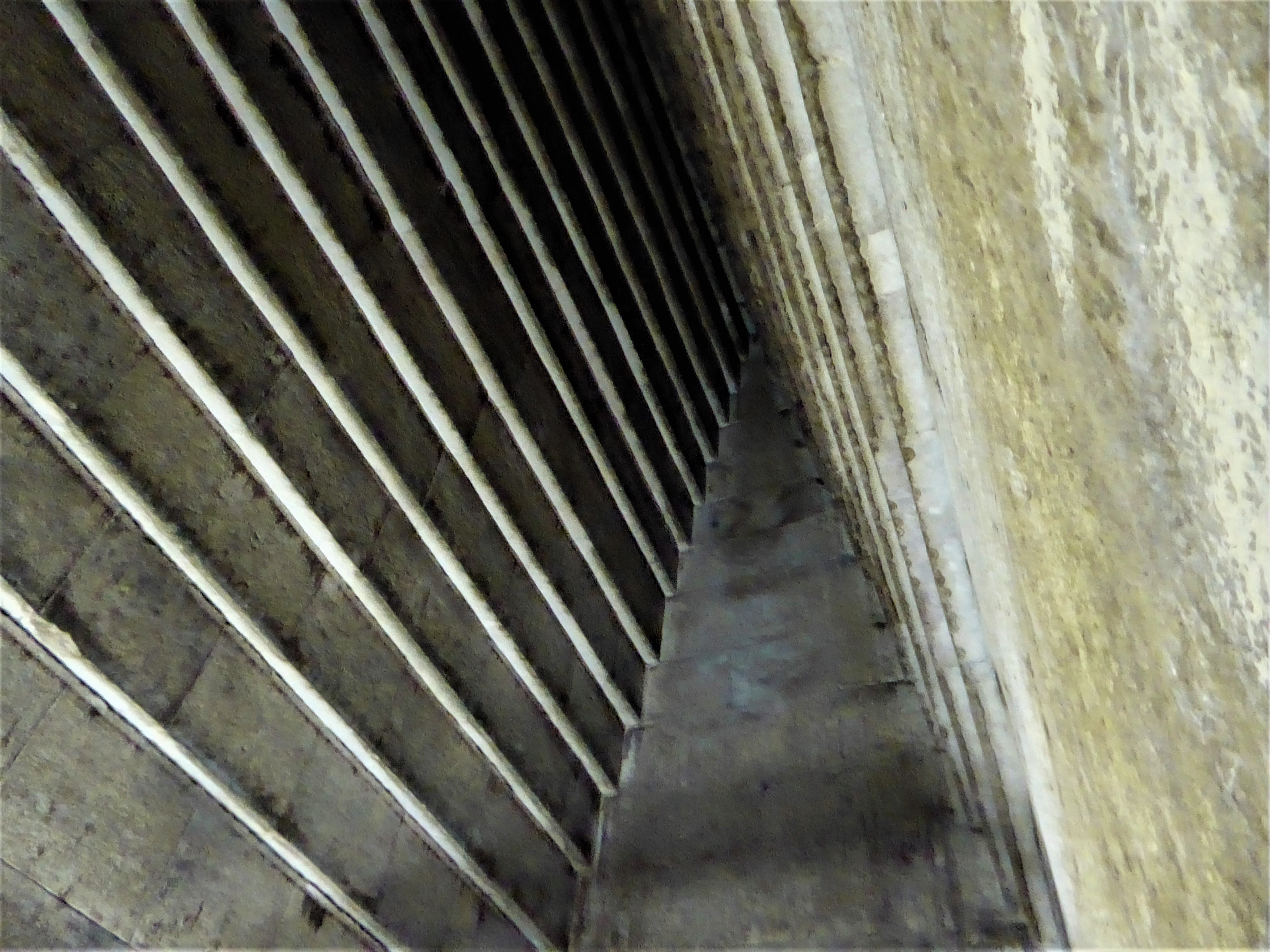
The climb out of the pyramid is a step exercise where you are greeted by a welcoming gush of hot but fresh air. Looking straight ahead you can see the (only small) the Pyramid of Unas, then the Step Pyramid and another pyramid (either Teti or Userkaf, I think) in Saqqara and even closer (on the right) the Mastaba el-Faraun (Mastabat al-Fir’aun/Mastabat el-Faraun/Mastabat Faraun – Build in the 4th Dynasty 2613-2494 BC) the word mastaba means bench so Mastaba el-Faraun means “Bench of the Pharaoh”. Mastaba’s were originally used as royal tombs but the tradition carried on for thousands of years afterwards by ordinary people who had the money to build them, a fraction of the size though, some the size of a single garage. The one in the picture is circa. 100m long, 74m wide and 18m high and belongs to Shepseskaf (Mastaba of Sepseskaf). On the left of the mastaba is the pyramid of Pepi II which is 52m high with a 78m base (6th dynasty 2278-2184 BC). Unfortunately, these pyramids and the whole complex around them was closed to the public.

Now that I had seen my next stop and still on a buzz from Dahshur I was super keen to head to the Saqqara complex!
Before Dahshur I have a two part Cairo blog here is Part 1 and Part 2
